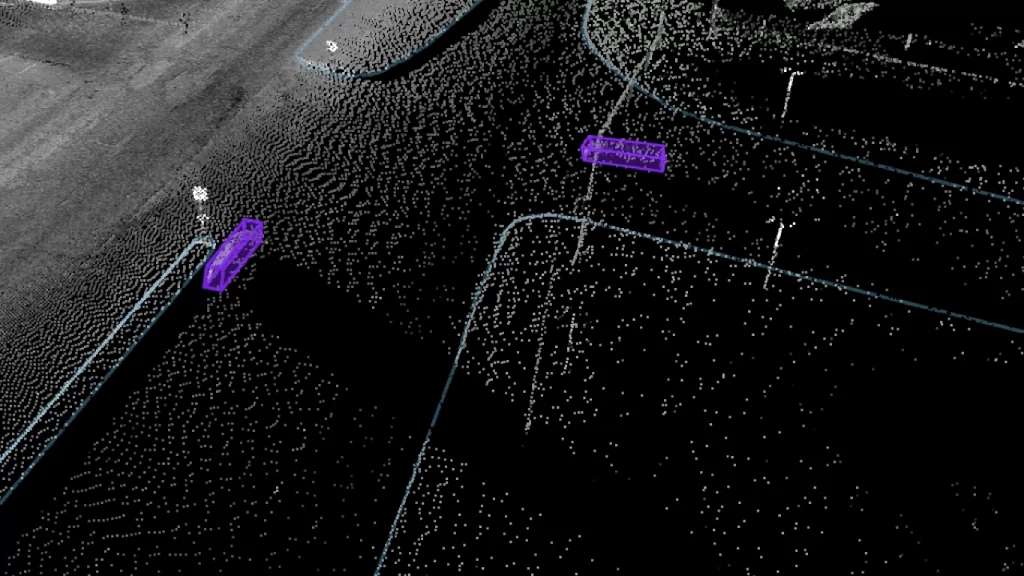3D annotation may be performed on three-dimensional data such as point clouds, and it allows for depth, distance, and volume to be factored into account. This is most often done with cuboids but it can also be done by using voxels (3D pixels) for semantic segmentation.
Where can 3D annotation be used?
As 3D annotation allows for depth and volume perception, it can be used in a variety of industries. It is much more difficult to annotate than 2D data but it provides much better insights when 2D visual data is insufficient.
- Medical: Analyzing 3D scans such as CTs and MRIs
- Geospatial: Detecting 3D structures on Synthetic-Aperture Radar imagery
- Automotive: Tracking vehicles on LiDAR point cloud data
- Industrial: Detecting anomalies on 3D scans of products
- Agriculture: Powering harvesting robots for fruit picking
- Retail: Detecting gestures and poses for VR and AR applications
The Pros
- Takes into account more dimensions and hence provides more useful information, especially in conditions which affect the 2D data (e.g., fog, darkness, occlusion, etc.)
- 3D annotations may also be performed with a good approximation on 2D data, such as segmentation of sequences of DICOM slices, or cuboid estimation on flat images based on the perspective.
The Cons
- Very time-consuming and requires advanced tools that are able to support large quantities of data.
- LiDAR data is precise for objects that are close to the source, but points get dispersed as the objects move further away, which inevitably affects the quality of the annotation.
Our Tips
- Some tools allow the user to visualize multiple viewpoints (side, top, front) to make the annotation of a single object easier. In addition, it is possible to compare the 3D data to a 2D capture of the same scene as a sanity check.
- 3D annotation for medical imagery is facilitated by the availability of smart segmentation based on tissue density, allowing for very precise annotations with little effort.
- It is recommended to create all 3D annotations in the same position concerning the pitch axis, which considerably facilitates the labeling of the roll and yaw axes.

